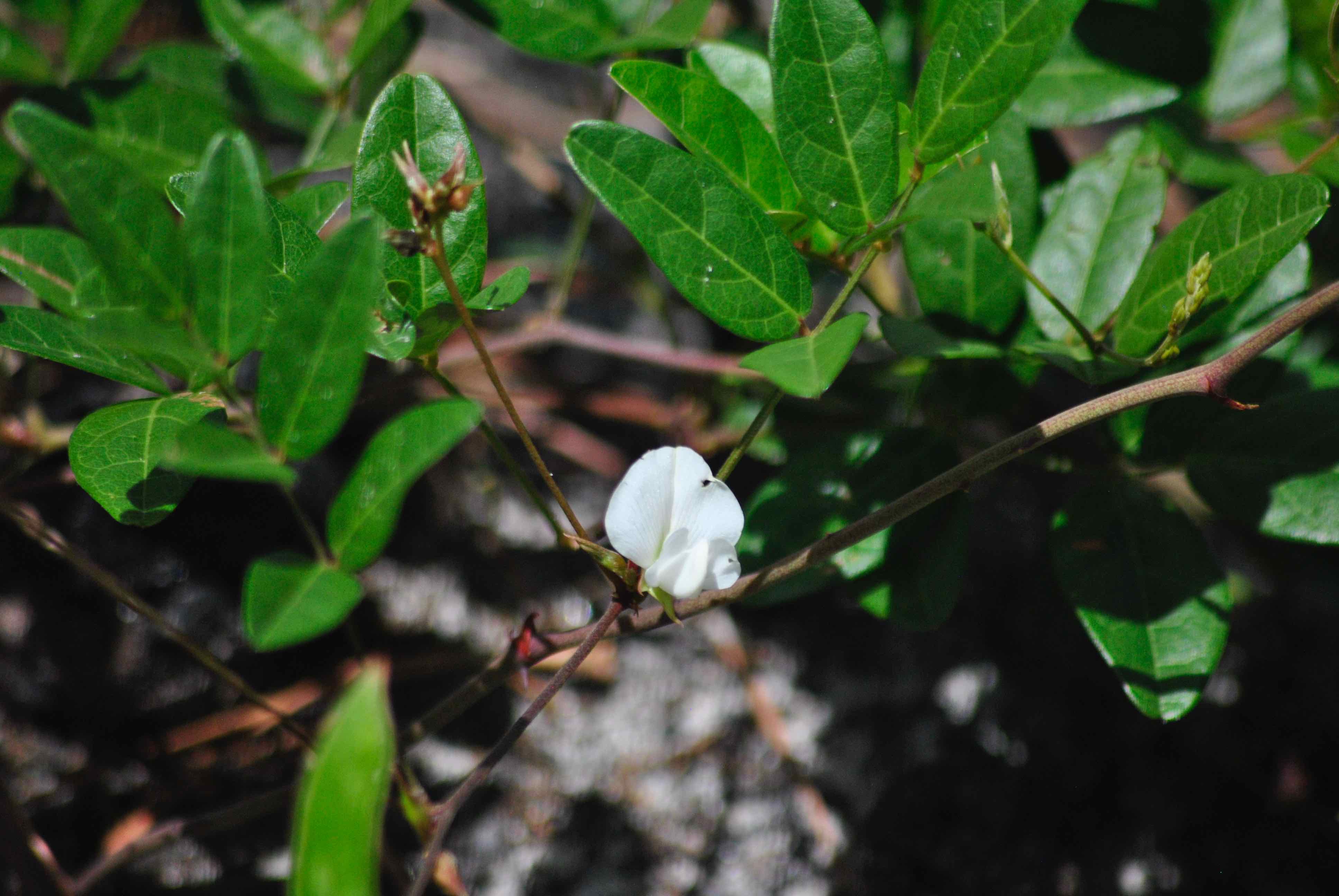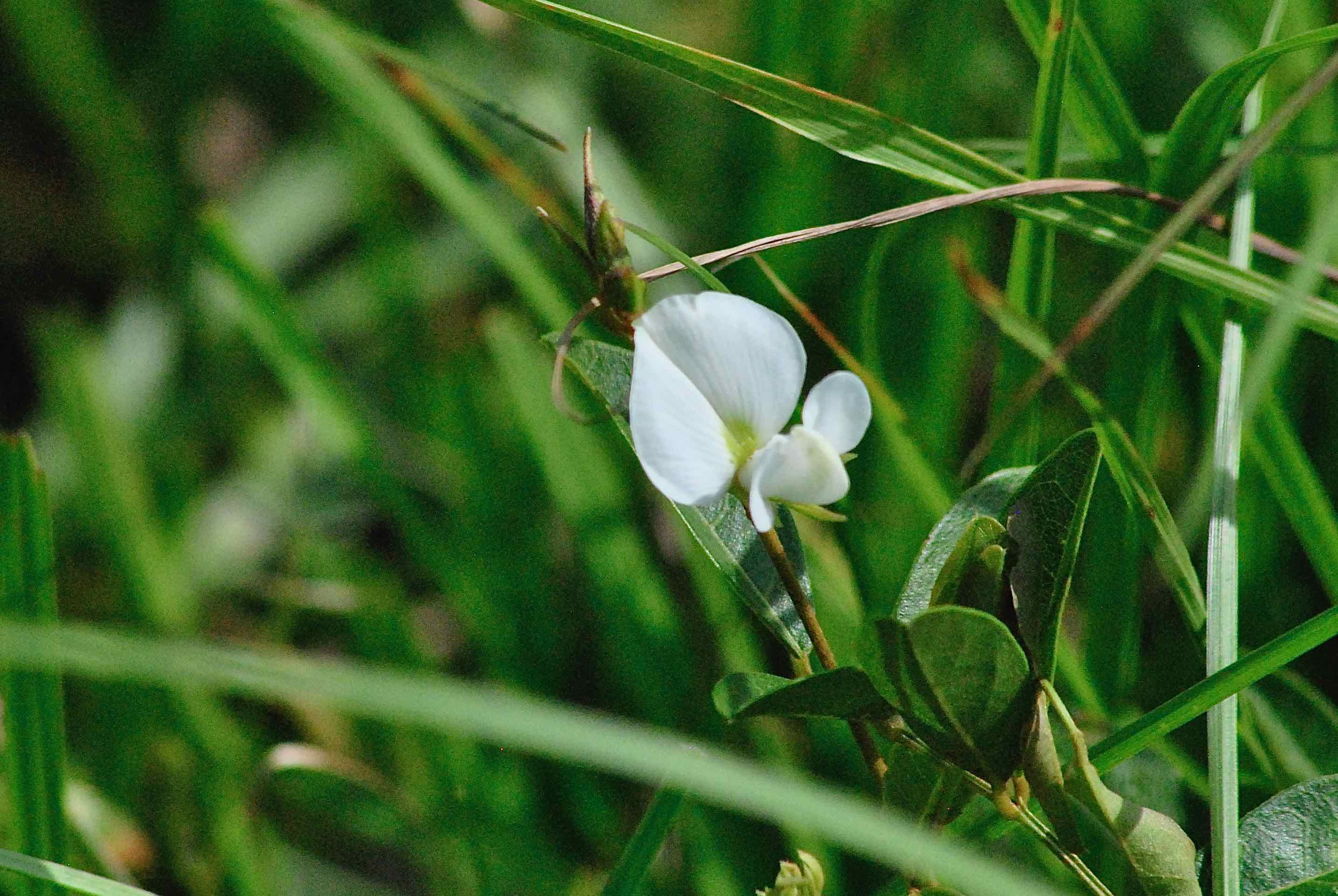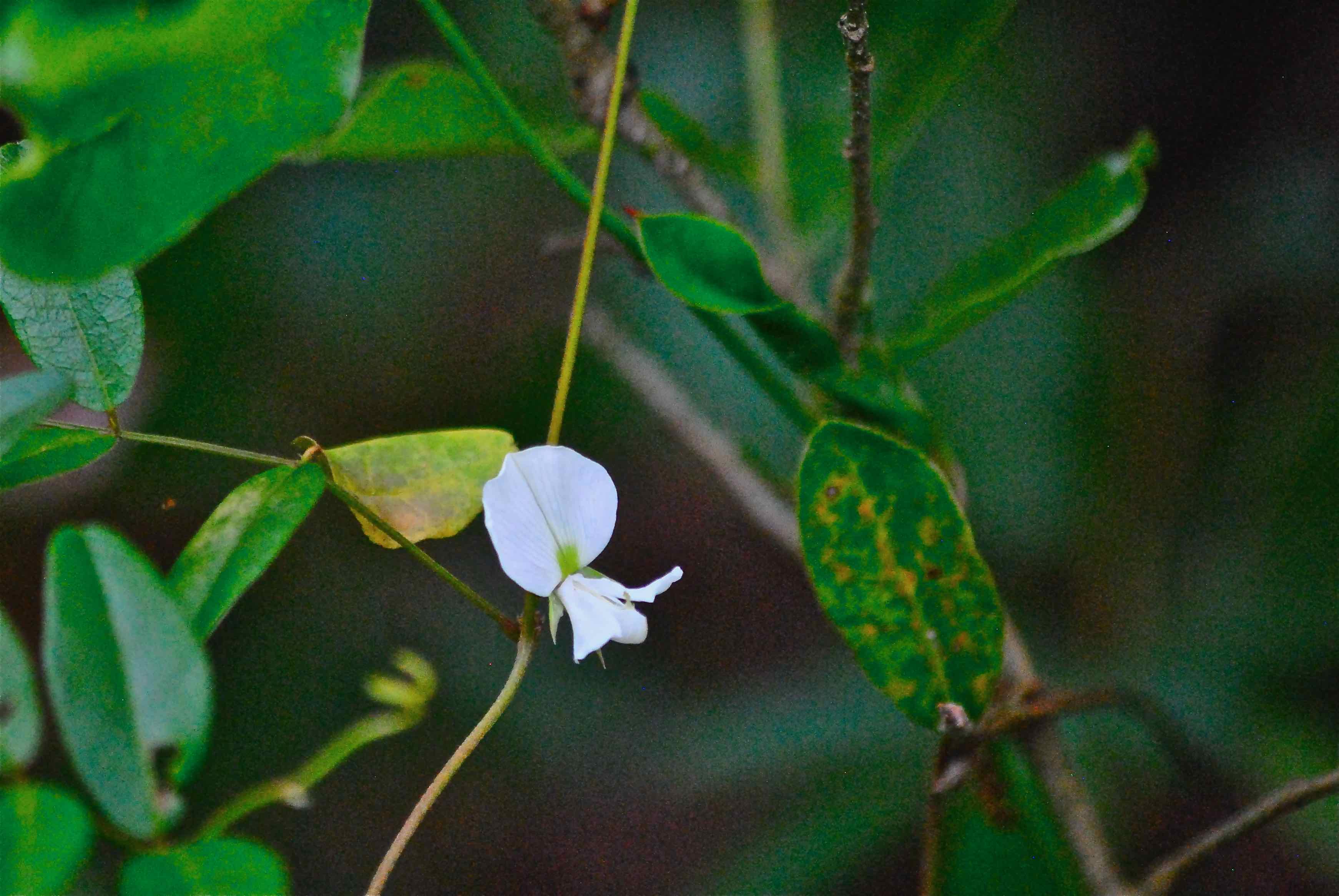
Elliott's milkpea, photographed at Royal Palm Beach Pines Natural Area, Royal Palm Beach, Palm Beach County, in June 2015.
Elliott's milkpea, Galactia elliotti, is one of those plants that's just there. Kinda like an extra in a movie, in the background as the main characters do their thing. Cool enough in its own way but otherwise unassuming.
But this modest pea, like others of its kind, has a super power, the ability to fix nitrogen from the air, which is vital not only to its own well-being, but that of its neighbors and by extention all creatures up and down the food chain. That ability caught the attention of scientists tackling arguably humanity's greatest problem: climate change. But we're getting ahead of ourselves. Back to some botanical basics first.
The most notable thing about Elliott's milkpea is its white flowers. It is the only pea native to Florida with white blooms; when you see them, you know instantly that you're looking at Elliott's.
It's a sprawling, low-climbing perennial vine found in dry habitats — dry pinewoods, sandy scrubs and dry hammocks. It prefers full sun but it will grow in areas with some shade. It's also tolerant of drought as might be expected given where it grows. Leaves are compound, each with as many as nine oblong leaflets, and arranged alternately along the stem. It likes sandy soils with poor nutrient content. Elliott's blooms spring into late fall.
Elliott's milkpea is found throughout most of Florida's Peninsula from Palm Beach County northward and in parts of the Panhandle. It's also found in Georgia, mostly along the coast, and in extreme southeastern South Carolina.
The Institute for Regional Conservation considers Elliott's milkpea rare within the bounds of South Florida, but it is not listed as endangered or threatened by any government agency.
It's a host plant for the longtailed skipper and the zarucco duskywing butterflies (but both use other plants as well). According to well-known naturalist and author Roger Hammer, Native Americans used the plant medicinally but we've not come across any details.
The Florida Native Plant Society says that Elliott's might have value as a ground cover and can be grown from seed, usually obtained from enthusiasts who are already growing it. (Collecting seeds on public lands is frowned upon, legally speaking. It can be done on private property with the owner's permission.) It does have value as forage for livestock. Some agricultural scientists have experimented with it to see if it can be grown in shady areas for grazing cattle.
As for its scientific name, Galactia is Greek for milky, as in the plant's milky sap. As for the inspiration behind Elliott, that's somewhat unclear. The obvious choice, given the plant's native range, is Stephen Elliott, the 18th-19th century South Carolina plantation owner, banker, legislator and amateur botanist of note. Naming conventions, however, point to another Elliott.
So back to our story. Elliott's is a legume, and like all legumes, it takes nitrogen from the air — nearly 80 percent of earth's atmosphere is nitrogen — and "fixes" it to the soil in the form of nitrites and nitrates with the help of some bacteria friends. It's part of what's called the nitrogen cycle and is vital to all plant life, since nitrogen is a vital plant nutrient. Elliott's, like all green plants, also is part of the carbon cycle, taking carbon dioxide from the atmosphere and converting the carbon into energy while releasing the oxygen into the air for us to breath. The energy it creates from carbon dioxide helps it fix nitrogen.
In 2004, scientists from the Smithsonian Environmental Research Center on Cape Canaveral used Elliott's milkpea in some experiments to see what effects increased carbon dioxide levels might have on the plants and their ability to fix nitrogen. They had been working on other types of plants since the 1990s, and most studies found that plants generally deal well with increased carbon dioxide, continuing to grow without any negative consequences. The hope is that additional plant growth might mitigate some of the effects of greater levels carbon dioxide in the atmosphere and by extention, climate change. Would the milkpeas responded similarly, and would they be able to fix more nitrogen to the soil, not only increasing nutrients available to themselves but other plants around them, which in turn would promote more plant growth?
At first the answer appeared to be yes. Elliott's did well. But over time, growth rates declined and so did the peas' ability to fix nitrogen. Even though they had plenty of carbon from which to produce the additional energy needed to fix additional nitrogen, the pea plants needed other nutrients in quantities not available in the type of soil in which Elliott's grows. In particular, the soil lacked enough molybdenum, which is essential in the nitrogen-fixing process.
There's no grand conclusion from the study. It was one study on one plant species, after all, and other legumes might react differently. But it did provide researchers with one more data point than they had before.Thus one modest milkpea's contribution to the world of science.
Elliott's milkpea is a member of Fabaceae, the pea family.
Click on photo for larger image
Links for Elliott's Milkpea



